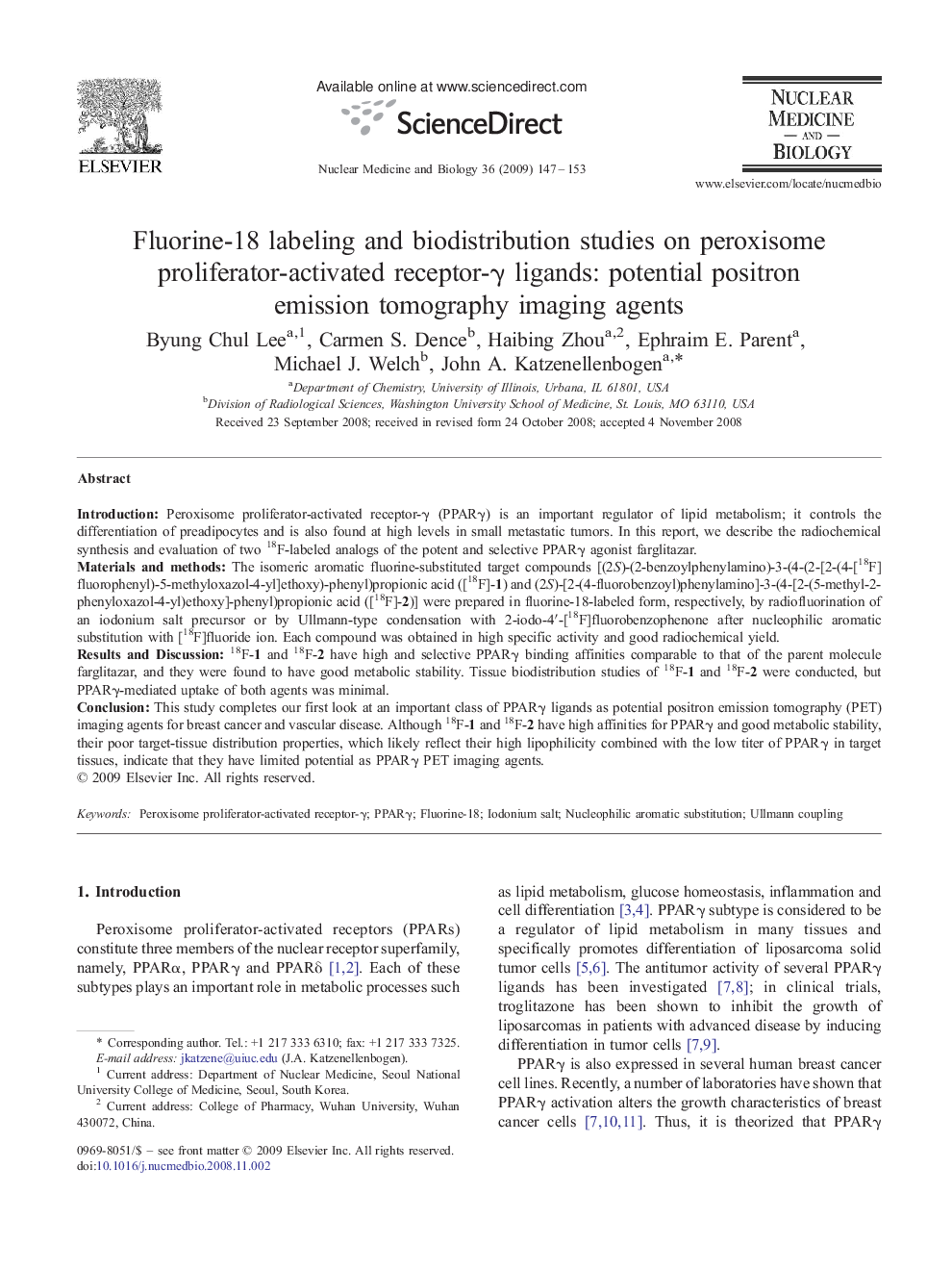| کد مقاله | کد نشریه | سال انتشار | مقاله انگلیسی | نسخه تمام متن |
|---|---|---|---|---|
| 2154523 | 1090239 | 2009 | 7 صفحه PDF | دانلود رایگان |

IntroductionPeroxisome proliferator-activated receptor-γ (PPARγ) is an important regulator of lipid metabolism; it controls the differentiation of preadipocytes and is also found at high levels in small metastatic tumors. In this report, we describe the radiochemical synthesis and evaluation of two 18F-labeled analogs of the potent and selective PPARγ agonist farglitazar.Materials and methodsThe isomeric aromatic fluorine-substituted target compounds [(2S)-(2-benzoylphenylamino)-3-(4-(2-[2-(4-[18F]fluorophenyl)-5-methyloxazol-4-yl]ethoxy)-phenyl)propionic acid ([18F]-1) and (2S)-[2-(4-fluorobenzoyl)phenylamino]-3-(4-[2-(5-methyl-2-phenyloxazol-4-yl)ethoxy]-phenyl)propionic acid ([18F]-2)] were prepared in fluorine-18-labeled form, respectively, by radiofluorination of an iodonium salt precursor or by Ullmann-type condensation with 2-iodo-4′-[18F]fluorobenzophenone after nucleophilic aromatic substitution with [18F]fluoride ion. Each compound was obtained in high specific activity and good radiochemical yield.Results and Discussion18F-1 and 18F-2 have high and selective PPARγ binding affinities comparable to that of the parent molecule farglitazar, and they were found to have good metabolic stability. Tissue biodistribution studies of 18F-1 and 18F-2 were conducted, but PPARγ-mediated uptake of both agents was minimal.ConclusionThis study completes our first look at an important class of PPARγ ligands as potential positron emission tomography (PET) imaging agents for breast cancer and vascular disease. Although 18F-1 and 18F-2 have high affinities for PPARγ and good metabolic stability, their poor target-tissue distribution properties, which likely reflect their high lipophilicity combined with the low titer of PPARγ in target tissues, indicate that they have limited potential as PPARγ PET imaging agents.
Journal: Nuclear Medicine and Biology - Volume 36, Issue 2, February 2009, Pages 147–153